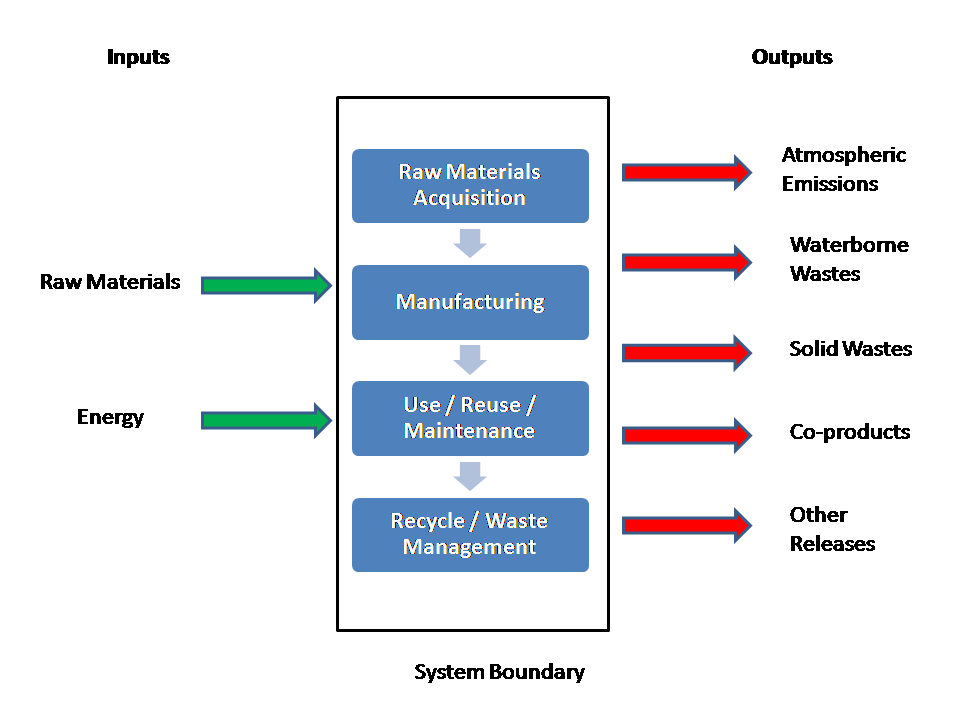Life Cycle Analysis
A key indicator of the sustainability of any product, we aim to assess our technology using a Life Cycle Analysis (LCA).
LCA is a methodology used to appraise the resource inputs, through-puts, outputs and associated environmental impacts of all stages of a product or process. It provides a useful tool to aid in large scale environmental decision-making.
The “life cycle” refers to all individual steps surrounding the subject under assessment, beginning with the raw materials extraction and processing, before manufacture, use, repair/maintenance, eventual disposal or recycling, and all transportation/distribution requirements in between.
Below is a conventional (linear) diagram to illustrate the concept, though as stated in the previous section we believe that a shift in mentality is required: products and processes should be evaluated in terms of their cradle-to-cradle potential.
LCA is a methodology used to appraise the resource inputs, through-puts, outputs and associated environmental impacts of all stages of a product or process. It provides a useful tool to aid in large scale environmental decision-making.
The “life cycle” refers to all individual steps surrounding the subject under assessment, beginning with the raw materials extraction and processing, before manufacture, use, repair/maintenance, eventual disposal or recycling, and all transportation/distribution requirements in between.
Below is a conventional (linear) diagram to illustrate the concept, though as stated in the previous section we believe that a shift in mentality is required: products and processes should be evaluated in terms of their cradle-to-cradle potential.
The stages involved in a typical LCA are:
- Goal and scope: define the “unit”, boundaries, assumptions/limitations, partition methods.
- Inventory analysis: quantifying energy, raw materials, environmental impacts.
- Impact Assessment: impact categories, category indicators, impact measurement.
- Improvement: identifying areas to reduce environmental impact, evaluation of study’s validity. This would include a review of opportunities to utilise waste products, turning them into useful commodities where possible.


